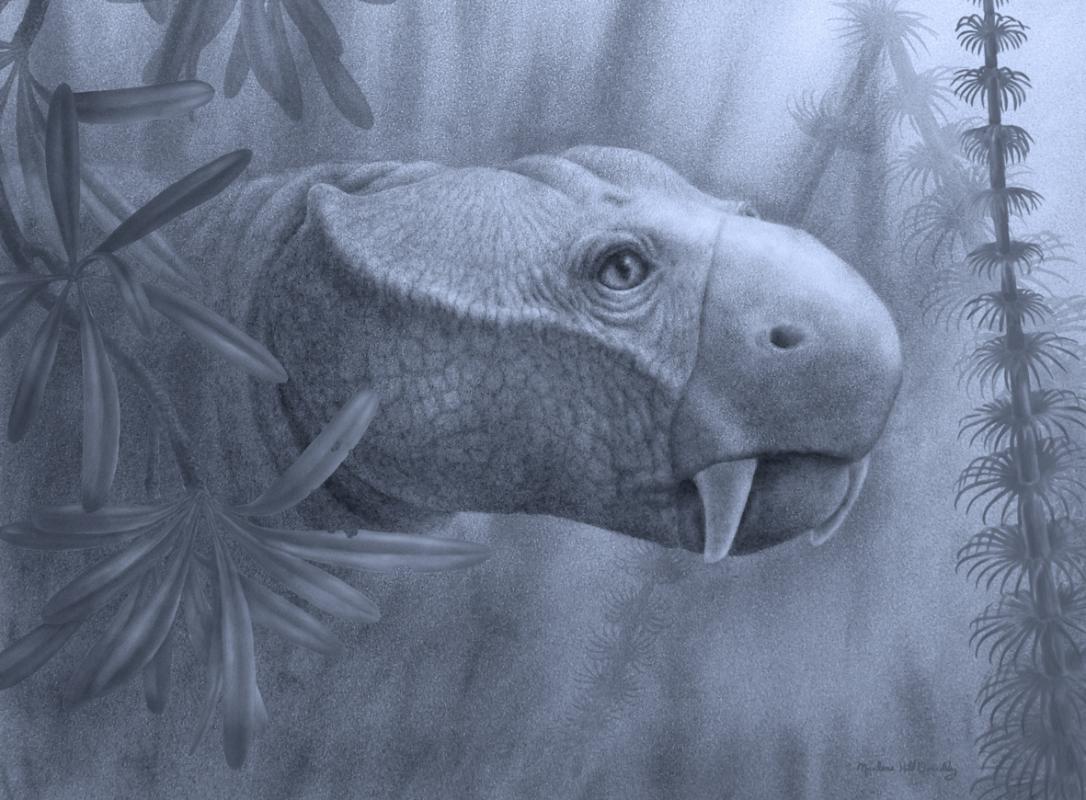A study of how the ancient relatives of modern mammals recovered after mass extinction raises fresh questions about the capacity for life to recover from cataclysmic events. A growing number of species in the modern world face extinction due to global climate change, habitat destruction and over-exploitation. The fossil record has been used by scientists in a bid to understand how mass extinctions came about, and how species and ecosystems recovered in the aftermath.
Research suggests that the survivors of mass extinctions are often presented with new ecological opportunities. The loss of many species in their communities allows them to evolve new lifestyles and new anatomical features as they fill empty niches.
However, it turns out that not all survivors respond in the same way, and some may not be able to fully exploit the new opportunities arising after a mass extinction. Dr Marcello Ruta (University of Lincoln, UK), Dr Kenneth Angielczyk (Field Museum of Natural History, Chicago), Professor Jörg Fröbisch (Museum für Naturkunde, Berlin) and Professor Michael Benton (University of Bristol) examined how a group of ancient relatives of mammals called anomodonts responded in the aftermath of the largest mass extinction in Earth’s history.Their findings, published this week in Proceedings of the Royal Society B and titled “Decoupling of morphological disparity and taxic diversity during the adaptive radiation of anomodont therapsids”, show that anomodonts remained anatomically conservative even as the number of species recovered.
The mass extinction at the end of the Permian Period - about 252 million years ago - had profound effects on organisms on land and in the sea, with as many as 90 per cent of marine organisms and 70 per cent of terrestrial species wiped out. Lead author Dr Marcello Ruta, of the University of Lincoln, UK, said: “Groups of organisms that survive such a mass extinction are said to have passed through an evolutionary bottleneck similar to the genetic bottleneck that may occur in a population if many of its members die off. A genetic bottleneck sometimes allows the population to move to a new evolutionary trajectory, but other times it constrains the future evolution of the population. Near the end of the Permian, a large number of anomodont species existed that displayed a wide range of body sizes and ecological adaptations, including terrestrial plant eaters, amphibious hippo-like species, specialized burrowers and even tree-dwelling forms.” The variety of anatomical features found in anomodonts declined steadily over their history. Even in the aftermath of the mass extinction, when there should have been a lot of empty ecological space, anomodonts did not evolve any fundamentally new features. This suggests that the evolutionary bottleneck they passed through during the extinction constrained their evolution during the recovery. This is the first study of its kind to address simultaneously changes in species number and anatomical diversity in anomodonts, and to quantify their response to the most catastrophic extinction on record. Anomodonts are abundant, diverse, and well-studied, which makes them ideal models for evolutionary analyses.<br /><br />The results underscore that recoveries from mass extinctions can be unpredictable, a finding that has important implications for the species extinctions being caused by human activity in the world today. We cannot just assume that life will return to the way it was before the disturbances. Funding was provided by the Natural Environment Research Council, the Deutsche Forschungsgemeinschaft, the Alexander von Humbolt Foundation and the German Federal Ministry for Education and Research
